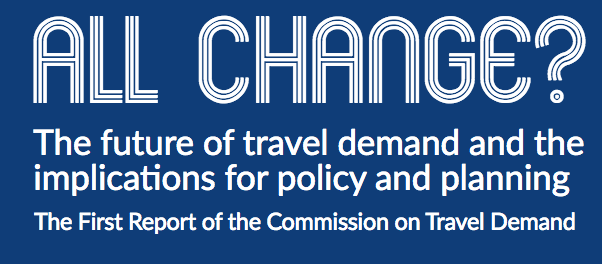An independent Commission on Travel Demand, funded by UK Research Councils, recently issued its report, based on evidence and expert advice. There is no single message, other than that there are more uncertain factors influencing travel demand than conventionally supposed. However, the report make ten sensible recommendations for better processes.
I was disappointed that the report did not consider two matters on which I had submitted evidence. One is that demand for any kind of product or service may saturate, that is, cease to grow once all needs are met. For instance, ownership of many household goods, such as washing machines, exceeds 90%, so that demand no longer reflects growing tes, but only replacement plus population growth. There is evidence consistent with saturation of demand for daily travel for many purposes. For instance, 80% of the urban population of Britain have a choice of three or more large supermarkets within 15 drive minutes of home, and 60% have a choice of four or more. If you have a choice of 3-4 supermarkets within 15 minutes drive, you may not be inclined to drive further to have a choice of a fourth or fifth, in which case your demand for travel to supermarkets is said to have saturated.
Second, given that average travel time has not changed for at least the last 45 years, as measured in the National Travel Survey, increased travel demand (distance per capita) must require faster travel. This is now hard to achieve, given high levels of car ownership and the limited scope for this to grow, plus a mature road network where congestion proves difficult to mitigate. We have High Speed Rail on the way, but rail is a minority of all trips, so HSR would be a minority of a minority, with little impact on average speed.
The travel time constraint, coupled with the speed constraint, means that travel demand per capita is unlikely to grow significantly in the future. Total travel demand will be driven by population growth, of course, although the pattern of demand will depend on where the additional inhabitants are housed: greenfield means more cars, urban at higher density implies investment in public transport.

